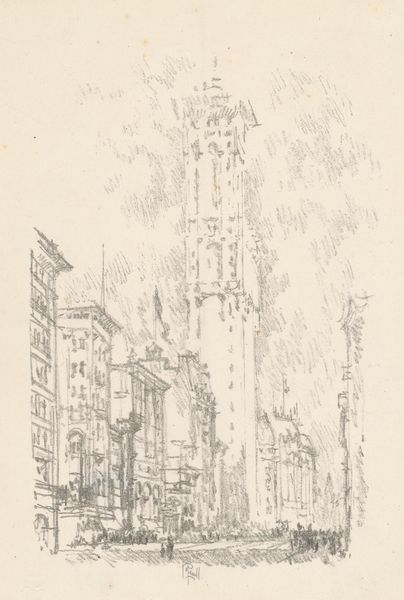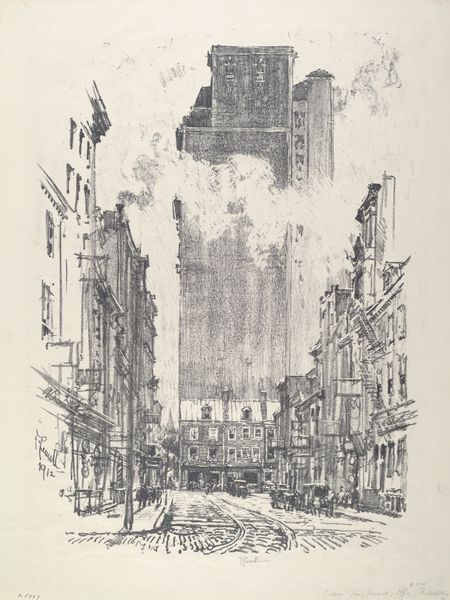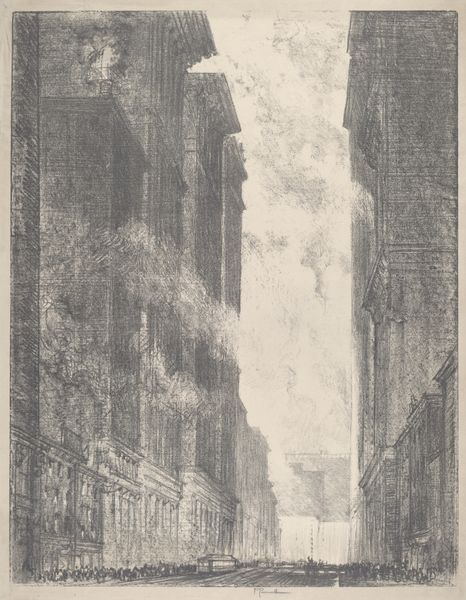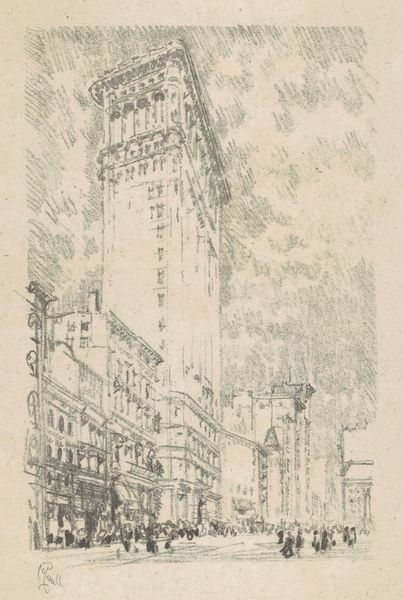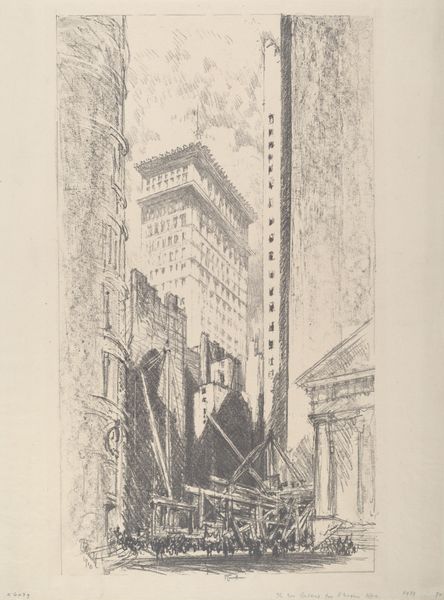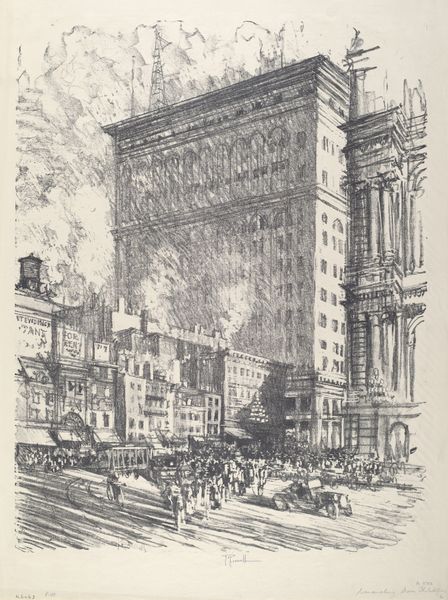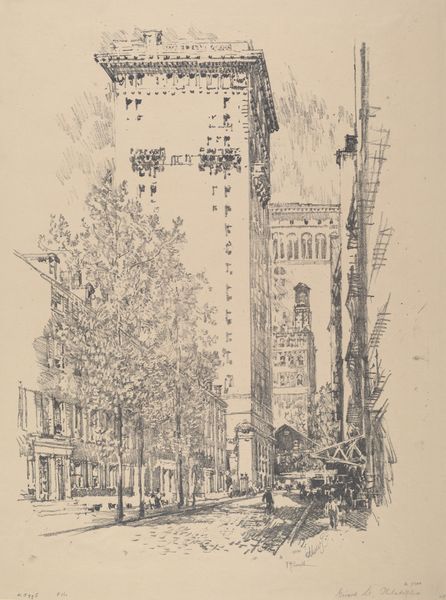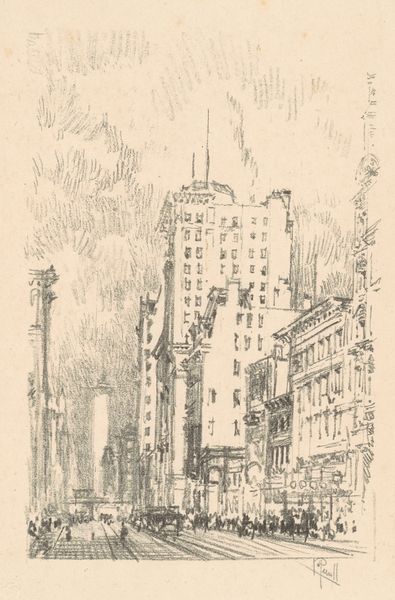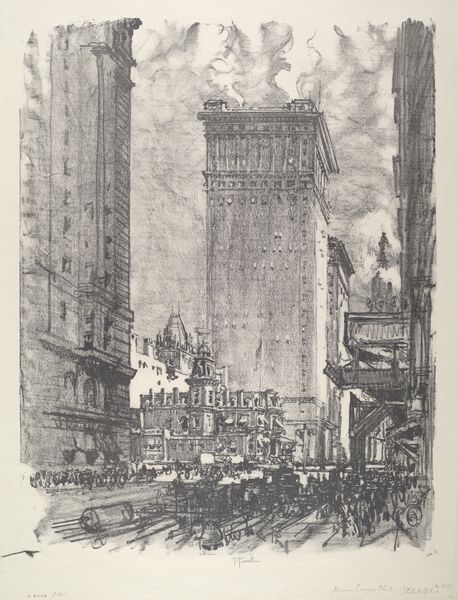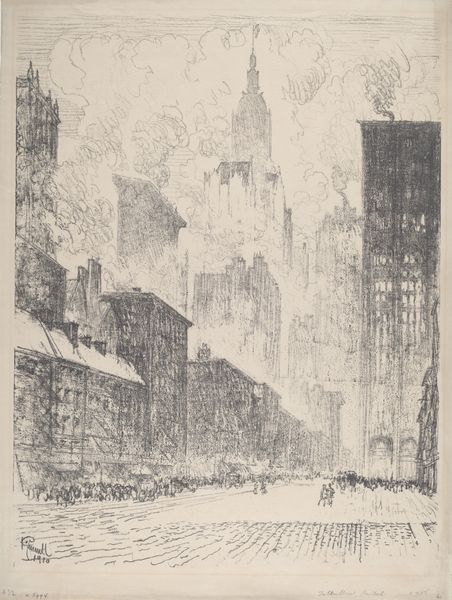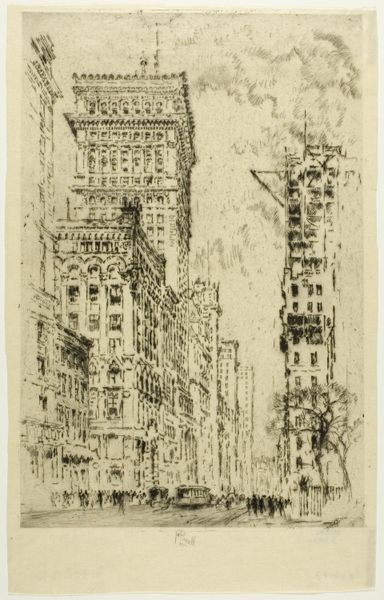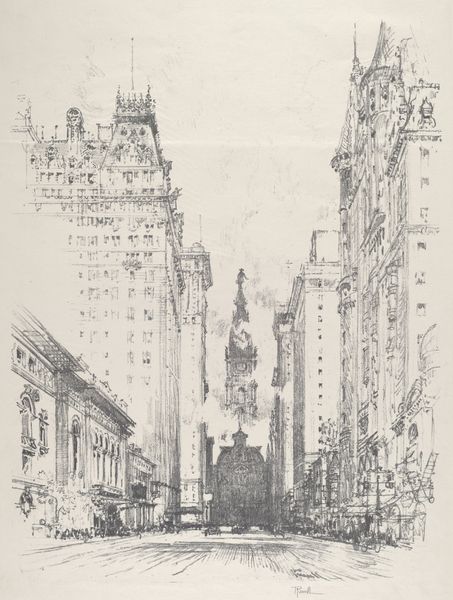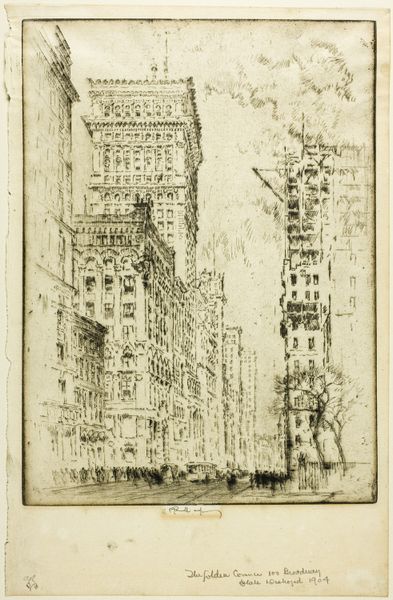
Dimensions: image: 25.08 × 13.02 cm (9 7/8 × 5 1/8 in.) sheet: 27.62 × 17.62 cm (10 7/8 × 6 15/16 in.)
Copyright: National Gallery of Art: CC0 1.0
Editor: Joseph Pennell’s "William Street," created in 1904 using graphite and ink, really captures the hustle and bustle of early 20th-century city life. What do you see in this piece, considering its historical context? Curator: This print encapsulates more than just a cityscape; it is a representation of societal dynamics. Pennell, working during the rise of American industrialization, positions the viewer at the bottom of William Street, dwarfed by the architectural assertion of capitalism. How does this upward visual trajectory play into themes of power and labour? Editor: That's a great point! The way the buildings seem to loom over the crowds below definitely gives off a sense of hierarchy. Curator: Exactly. And we need to consider the medium: a print, allowing for mass production and distribution. Pennell isn't just depicting the scene, but democratizing its image, prompting wider social reflection on the changing urban landscape and the conditions it produced. Who had access to images like these, and what would their perspectives be? Editor: So, by making it a print, he’s both participating in and commenting on the industrial revolution's impact on society? It's not just about what's in the picture, but how the picture was made and distributed. Curator: Precisely. The choice of subject matter and technique invites a critical perspective on urban expansion and its effects on the social fabric. It becomes a point of departure to discuss labour rights, income inequality, and even environmental degradation. Do you see it as celebratory or critical? Editor: I think it's more critical, now that I'm looking at it through that lens. It’s easy to romanticize old cityscapes, but this brings up important questions about who benefited from all that growth. I’ll definitely keep that in mind. Curator: Excellent. Seeing art as a catalyst for understanding social issues deepens our engagement with both the artwork and the world around us.
Comments
No comments
Be the first to comment and join the conversation on the ultimate creative platform.
